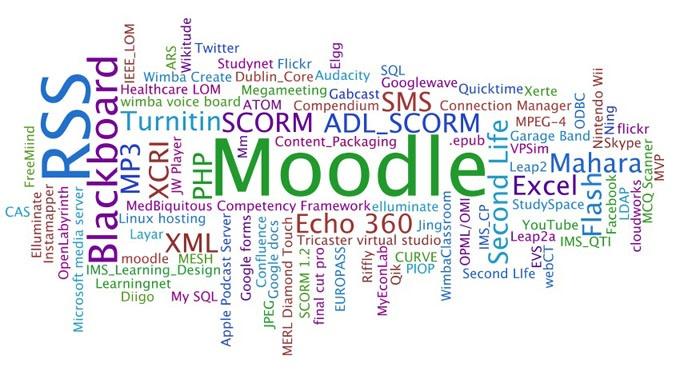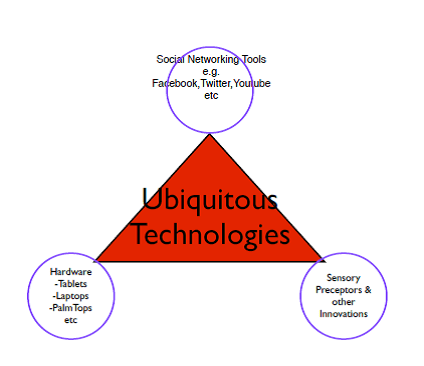In last five decades, research has been undertaken in the field of e-learning and e-learning systems design and that has led to a complete transformation of all forms of education, learning and training which we encounter now in 21st Century.
Today there has been an increase in the use of different internet technologies for delivery of education, training and learning to a wider community of learners around the world.
In this digital age, learning opportunities span over a life time right from childhood to all the way to adulthood, young or old. Competencies once gained needs constant updating to keep up with the changing environments and, with new technologies and trends. E-Learning has the potential to empower us to know more, learn at must faster rate from different sources at a low cost and also harnessing the power of data/information/knowledge.
Over the years, the potential of e-learning and systems using e-learning has not been explored completely and at the same time the benefits of these e-learning systems are over-exaggerated. Here are some examples of the current learning systems in place at different Universities in the UK.

Figure 1 : Learning Systems used Around UK, Adapted from http://elearning.ac.uk/features/vlesindelivery.html
Implementing these learning systems in the Universities are costly & time consuming. Even then many of these implementations are superficial for creating an environment for learners to engage through learning activities. These learning systems tend to act as data repository and limits active learner participation. For many students, these learning systems provides on-screen text for them to read. On the other hand, University staff use these learning systems cause, such systems are a consequence of directives from senior management and towards mission statements, hence tutor designed pedagogic practices are flawed, focus is on the use of technology for providing contents to the students than looking at student/learner’s active engagement with the learning material and/or technology at large to enable a personalized and enjoyable learning experience.
Technological advancements taking place would result in an increasing need for integrating internet based learning into University courses, which would carry the role of more than just a data repository and have a larger impact on the rate of learner motivation, the learning process, towards building curiosity to learn something new/exciting about the surrounding which is the whole world (connected by internet), making use of different technologies and sources(different media format). All this to, create a path to innovate and to enable social learning through the use of social media network tools. This could be made available to the students( to some extent), but in order to do so there would be an increased work load for University staffs and on their beliefs about the use of these technologies into education and their reluctance to adopt new teaching methods. In order to make these technologies a part of this new drive using different existing (ubiquitous) technologies in e-learning system and using these technologies to make the right impact on the stakeholders, there would be a need to have pragmatic scaffolds to facilitate infusion of such technologies into rich LE at Universities.
Technology in general has been growing and, attracting increasing number of users as it evolves. And the need to use E-Learning with these technologies and as a part of University curriculum calls for to look into the design and development of such systems using technologies which students are comfortable using on a day to day basis like the Web 2.0 and hard technologies as mentioned in the figure 2.

Web 2.0 has become an implicit part of a student life. And some tutors, instructional designers and Universities at large have started to explore the potential usage of these soft-technologies within the education domain.
Some of the popular Web 2.0 soft-technologies are cited in the figure below:
Figure 3 : Web 2.0 Tools, Adapted from http://rossdawsonblog.com/weblog/archives/2007/05/launching_the_w.html
These Web 2.0 technologies has the potential to be engraved into the existing and new learning systems as stand alone to support learners with different cognitive and learning styles, with different competencies to enhance their own learning experience in unison with their social lives. Thereby enabling learning as a part of their normal social lives. Apart from Web 2.0 technologies, hard-technologies like tablets, smart phone/normal phones, laptops along with network technologies like cloud computing etc, 3G/4G network etc could play an intrinsic role within current LE, this needs to be explored to look into the implications of such technologies at Universities to support learners engagement and motivation level.
For more please refer the following:
A 10. Nair,U.,(2015), Learner, Learning Models ‘n’ Learning Theories, EdTech Review, July.2015.
A 9. Nair,U.,(2015), Exploring Systemic Design Principles for Modern Day Virtual Learning Environment (VLE): My Quest, EdTech Review, April.2015.
A 8. Nair,U.,(2015), Understanding and Practicing Capsule Based Learning , EdTech Review,January.2015.
A 7. Nair,U.,(2014), Holistic Findings : Through the Lens of Carpe Diem , EdTech Review, December.2014.
A 6. Nair,U.,(2014), Systems Approach to E-Learning, EdTech Review,June.2014.
A 5. Nair,U.,(2014), ‘EduÆTorium’ (Pronounced as Edu-‘I’-Torium) – An Architecture for a PLE, EdTech Review,April.2014.
A 4. Nair,U.,(2014), Experiment with MOOCs : A Case of Coursera,EdTech Review , April.2014.
A 3. Nair,U.,(2014), Instructional Design Models in the 21st Century: A Review,EdTech Review , March.2014.
A 2. Nair,U.,(2014), Learning , Teaching and Technology in Higher Education, EdTech Review, March.2014.
A 1. Nair,U.,(2013), Ubiquitous Approach to e-learning, EdTech Review, September.2013.
JP 5. Nair,U.,(2015), Soft Systems Methodology For Personalized Learning Environment, e-Learning and Digital Media,Vol.12, Issue. 1,pp.34-56 (Sage Publications).
JP 4. Nair,U.,(2014), Integrating ‘Ubiquitous Technology’ into online learning, International Journal of Science and Research, Vol.3, No.9, pp: 1863 – 1867 (impact factor 3.36).
JP 3. Nair,U.,(2014), Channelling Contemporary e-Learning Practices at Universities in UK towards ‘personalized learning environment’, International Journal of Advanced Research,Vol.2,No.6, pp. 767-776 (impact factor 1.66)
JP 2. Nair,U.,Singh,P.,(2013), Food for Thought: Can Social Media be a Potential ‘Learning tool’ for Universities ?, Educational Quest : International Journal of Education and Applied Social Science, August.2013,Vol.4,Issue.2,pp 115-119.
JP 1. Nair,U.,(2013), A Brief Introduction to current e-learning systems , Third Degree : The working papers of Doctoral Seminar Series,Feb.2013,Vol.1,Issue 1,pp 15-17.
A: EdTech Review Articles
JP: Journal Papers